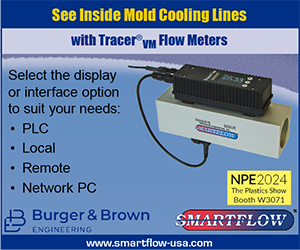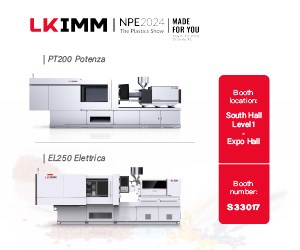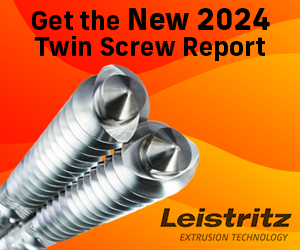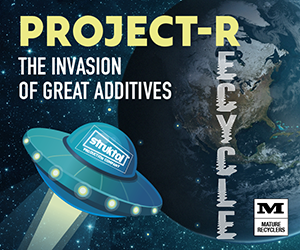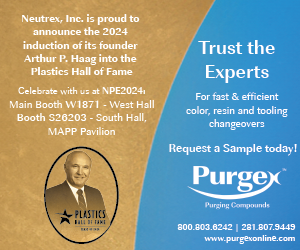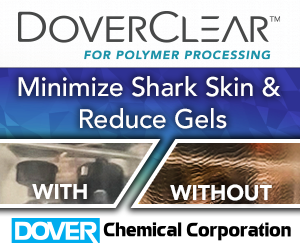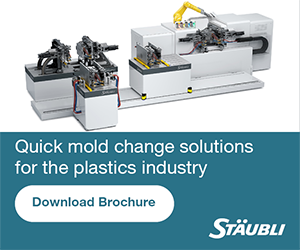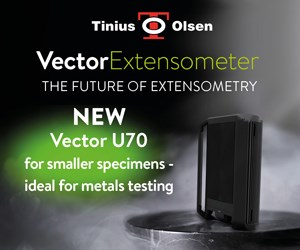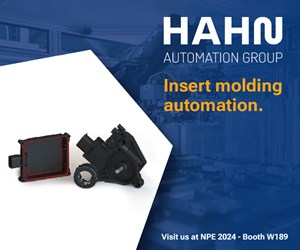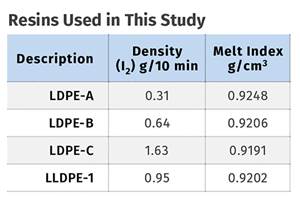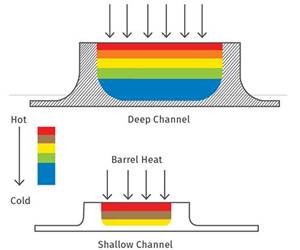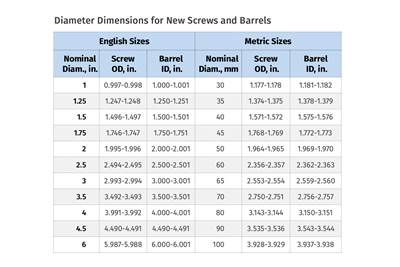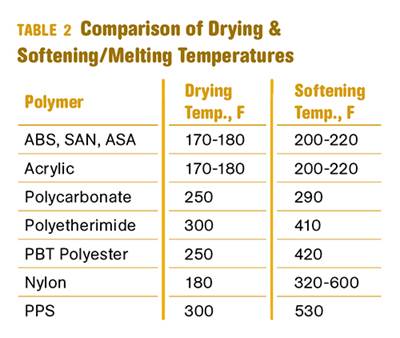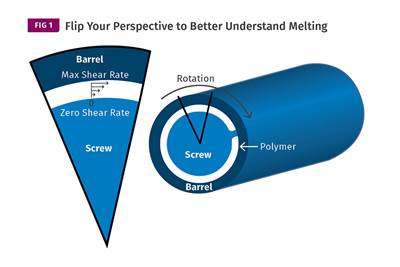Materials at NPE 2003
The footprint of thermoplastic materials suppliers at this year’s NPE is going to be fainter than usual.
The footprint of thermoplastic materials suppliers at this year’s NPE is going to be fainter than usual. Big names in engineering materials absent this year include Dow, Eastman, Rhodia, Ferro, and Victrex. As for volume resin suppliers, the exhibitor list has shriveled to just Basell Polyolefins and Chevron Phillips.
This diminished presence is linked to the budget-squeezing effects of exploding feedstock costs and tepid demand growth in the past year. Yet there is still a respectable contingent of more than 110 materials suppliers at NPE 2003, including many compounders, overseas suppliers, brokers, and vendors of recycled materials. And there is significant news to be found among those exhibits, including a novel PPO-based thermoset from GE Plastics; polyethersulfone sulfone (PESS), a novel high-temperature resin from Gharda Chemicals of India; decoration-friendly and warp-resistant acetals from DuPont Engineered Plastics, and electrically and thermally conductive compounds from PolyOne. In addition, thermoformers will get a look at a handful of new specialty sheet products.
The stars of the show are thermoplastic elastomers (TPEs), with a dozen or so new families bouncing into view. New TPUs are especially evident, which exhibitors attribute to expiring patents and the arrival of new offshore suppliers.
Extending resins’ reach
Most of the materials news at the show involves expanding the range of functionality of proven resins. DuPont, for example, has overcome some deficits of acetals with new Delrin grades that have better melt strength for large-part thermoforming and greater adhesion to paint or other resins. DuPont has matched certain Delrin materials with grades of Ponaflex styrenic TPE from Germany’s Pongs & Zahn Plastics AG to permit hard/soft overmolding without a tie layer. DuPont is also introducing new FR nylon 6 grades for connectors and LCPs with elongation and weld strength superior to previous offerings.
GE Plastics is unveiling a new version of its Lexan EXL silicone-rubber-modified polycarbonate that offers extra-high toughness yet retains PC’s clarity. GE’s Noryl PPO is coming out in new versions such as Noryl CRX styrenic grades with enhanced chemical resistance, and Noryl PPX polypropylene grades suitable for large thermoformed auto-exterior panels.
LNP Engineering Plastics is broadening its line of Verton long-glass compounds beyond PP to include nylon 6 and ABS matrices, offering increased structural strength, improved aesthetics, and better color. A second LNP initiative is internally lubricated PPO compounds with potential for replacing fluoropolymers in automotive and medical uses. LNP also has a new line of nylon 6 and 66 grades without halogen or red phosphorus that comply with tougher environmental standards affecting connectors and other electronics.
Bayer and BASF are emphasizing processing advances utilizing their materials. Both plan to showcase their metal-nylon “hybrid” approaches—selective overmolding with plastic of stamped metal components—for automotive front-end and other structural modules. Bayer also plans to show a new color-infusion technology that is a versatile, low-cost way to apply a variety of colors to PC, ABS, and PC/ABS for anything from eyeglasses to CDs.
BASF will introduce to U.S. customers its Terblend N nylon 6/ABS alloy family, which launched in Europe late last year. Typical applications are auto-interior trim. Impact-modified and uv-stabilized grades are offered. BASF is also unveiling laser-weldable nylon 6 and 66 grades.
Multibase, acquired last year by Dow Corning, is introducing its newly commercial Nylex PP/nylon 6 alloy family to the U.S. It has already been adopted for European automotive cowlings and A-pillars due to its abrasion and uv resistance, colorability, and strong adhesion to TPOs and SEBS.
Engineered Plastics Corp. is launching a tough, rigid copolyester alloy whose colorability, scratch resistance, and chemical resistance eliminate the need for paint. Called Optimum, it’s aimed at bumper fascia and car interior panels, recreational vehicles, and appliance housings. It can be injection or blow molded and thermoformed, and can be used as a capstock or preformed insert with lower-cost substrates.
RTP is showcasing its micro-tagging technology, which disperses minute particles (20 to 200 microns) at very low levels in PC, ABS, and other compounds. The micro-tags give materials and parts a “fingerprint” that can be used to thwart counterfeiting or defend against liability claims. Micro-tags can be made either visible or detectable only by uv light or electronic scanners.
In packaging, Chevron Phillips Chemical and BASF are unveiling styrenic block copolymers that improve blending efficiency with crystal PS. CPChem’s K-Resin XK 40 is said to offer 20% in cost savings in styrenic blends. CPChem is also introducing the high-impact DK-13 grade for cast and blown films suitable for shrink labels and other uses. The grade offers a lower shrink initiation temperature and higher shrink ratio than currently-used shrink label materials.
Basell Polyolefins is launching PP-based materials with polar functionality for use as masterbatch vehicles. These Oxy-PP grades allow various oxygenated components (like alcohol or carboxylic-acid groups) to be introduced into the polymer chain, creating PPs that act as if they have a low molecular weight. That improves wet-out of organic and inorganic surfaces and improves particle dispersion.
PolyOne is unveiling two developmental families of nanoclay compounds of PP, TPO, TPV, and other TPEs. To become available late in the year, these are geared to improve fire resistance without property penalties and to elevate stiffness and other mechanical properties.
Recent alliances have strengthened PolyOne’s role in electrically and thermally conductive materials. Polyacrylonitrile-based inherently conductive polymers will be introduced for use with acrylics. Also, a recent deal with Noveon means PolyOne will distribute its partner’s Stat-Rite inherently dissipative polymers in some market sectors, while PolyOne’s own Stat-Tech ESD compounds will be distributed by Noveon to other markets. PolyOne also plans to expand its Therma-Tech line of thermally conductive compounds.
Flood of novel TPEs
NPE gives ample evidence of intense R&D activity in TPUs. One example is Noveon’s new Estane Easy-To-Extrude (ETE) line, being launched to minimize the die build-up associated with processing of hard TPUs (50 Shore D or higher). Noveon is also introducing a halogen-free FR TPU and the Estane MTV series for thin (0.75 to 1 mil) breathable films with high MVT (moisture vapor transmission) rates.
BASF has a new TPU slate aimed at the tubing market’s need for hard TPUs that are tough and transparent yet also easily processed. BASF’s latest offerings offer 50D to 74D hardnesses and superior extrusion characteristics.
GLS has a high-performance rubberized TPU alloy with 45 Shore A hardness—reportedly the softest TPU in the market. Versollan TPUs target power-tool handles, tractor parts, and sports equipment.
Spain’s Merquinsa is introducing new Pearlthane TPU grades, one for low-density molded technical parts and the other offering good low-temperature impact strength in animal ear tags, mining screens, and seals.
If you’re looking for other news in TPEs, the show affords an opportunity to find out more about Multibase’s novel TPSiV family of crosslinked silicone rubber in either a flexible nylon or proprietary thermoplastic matrix. In their first year on the market, these heat- and chemical-resistant TPVs have won applications in the exterior layer of coextruded hose for auto brake and fuel lines and in an extruded seal for a construction profile.
Kraton Polymers is offering a new SBC elastomer as an alternative to flexible PVC. Kraton A materials, when compounded, are said to improve strength, softness, heat resistance, and appearance in toys, packaging, sporting goods, and technical parts.
GLS is launching Versalloy 8000, a cost-effective TPV alloy offered in a 45 to 70 Shore A range. The TPV boasts good tear and tensile properties, colorability, high flow, heat resistance up to 125 C (257 F), and isotropic shrinkage.
Teknor Apex will introduce super-soft flexible PVCs that process on standard injection and extrusion equipment. Three grades offer 39A to 50A hardnesses. They have potential for replacing PVC plastisols in belts, rollers, step pads, and grips.
New for thermoformers
A handful of sheet producers from the U.S., Austria, Malaysia, and Spain will be exhibiting. GE Polymershapes is bringing several new products, including its weatherable SLX (previously called Sollx) proprietary polymer for in-mold decorating (IMD) inserts. Senoplast will show off mono- and multi-layer sheets for IMD, packaging, automotive, appliances, and other durables. And Spartech has six new products, including foamed HDPE, reinforced and flame-retardant grades, TPO, high-heat copolyester, and oxygen-barrier materials.
Related Content
How to Estimate and Control Head Pressure
You rightfully worry about melt temperature, but don’t overlook head pressure, because the two are closely linked and will influence line performance.
Read MoreHow Polymer Melts in Single-Screw Extruders
Understanding how polymer melts in a single-screw extruder could help you optimize your screw design to eliminate defect-causing solid polymer fragments.
Read MoreFormulating LLDPE/LDPE Blends For Abuse–Resistant Blown Film
A new study shows how the type and amount of LDPE in blends with LLDPE affect the processing and strength/toughness properties of blown film. Data are shown for both LDPE-rich and LLDPE-rich blends.
Read MoreThe Importance of Barrel Heat and Melt Temperature
Barrel temperature may impact melting in the case of very small extruders running very slowly. Otherwise, melting is mainly the result of shear heating of the polymer.
Read MoreRead Next
Troubleshooting Screw and Barrel Wear in Extrusion
Extruder screws and barrels will wear over time. If you are seeing a reduction in specific rate and higher discharge temperatures, wear is the likely culprit.
Read MoreWhy (and What) You Need to Dry
Other than polyolefins, almost every other polymer exhibits some level of polarity and therefore can absorb a certain amount of moisture from the atmosphere. Here’s a look at some of these materials, and what needs to be done to dry them.
Read MoreUnderstanding Melting in Single-Screw Extruders
You can better visualize the melting process by “flipping” the observation point so that the barrel appears to be turning clockwise around a stationary screw.
Read More

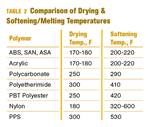
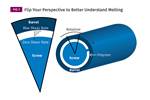


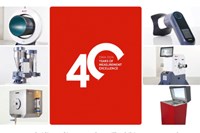
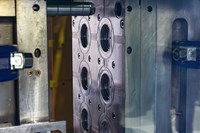
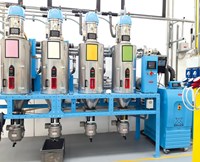
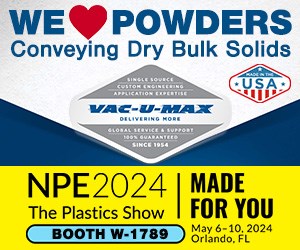
.png;maxWidth=300;quality=90)
